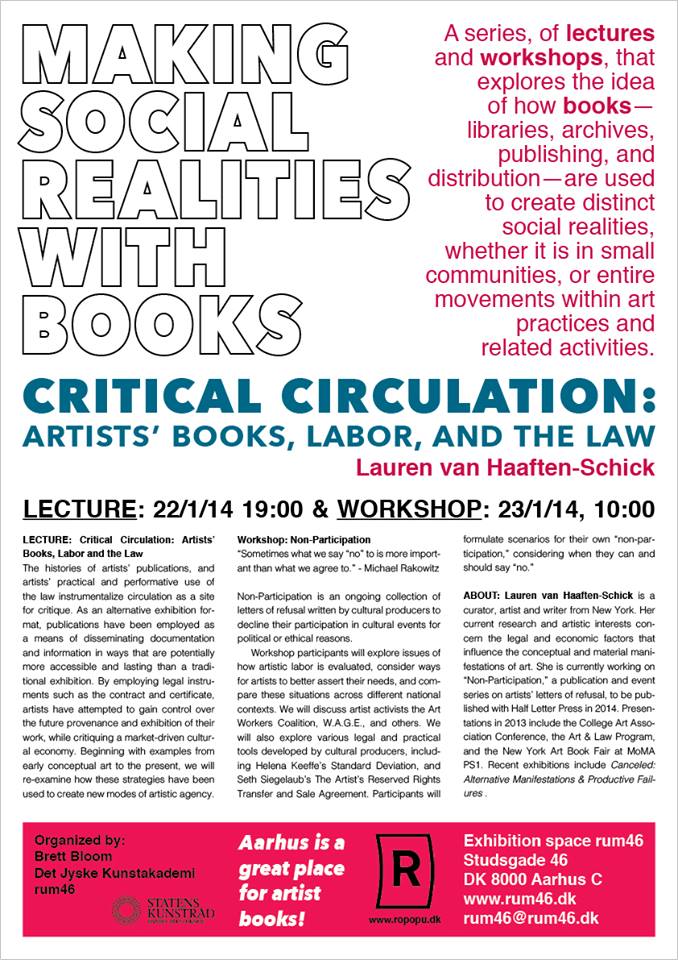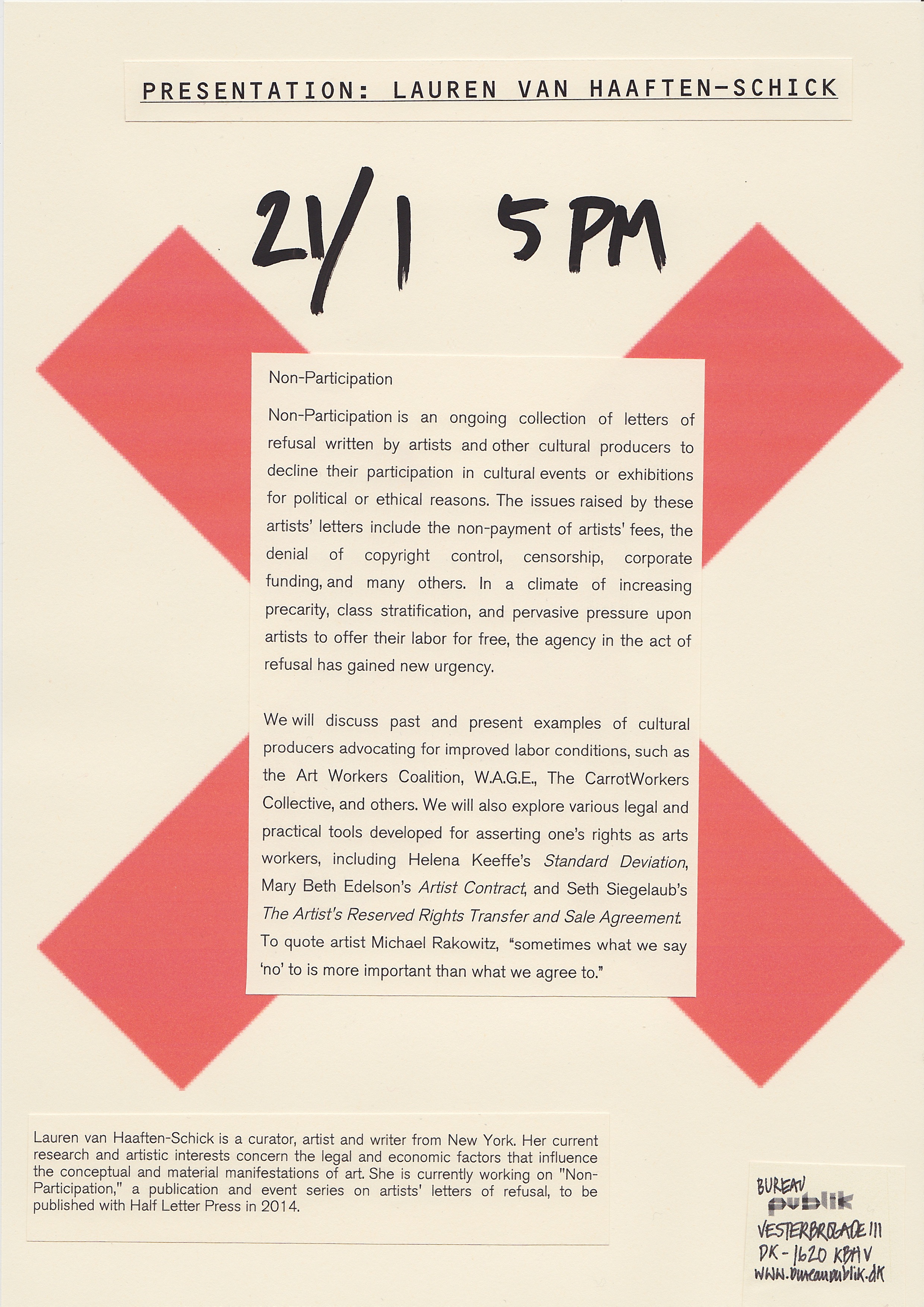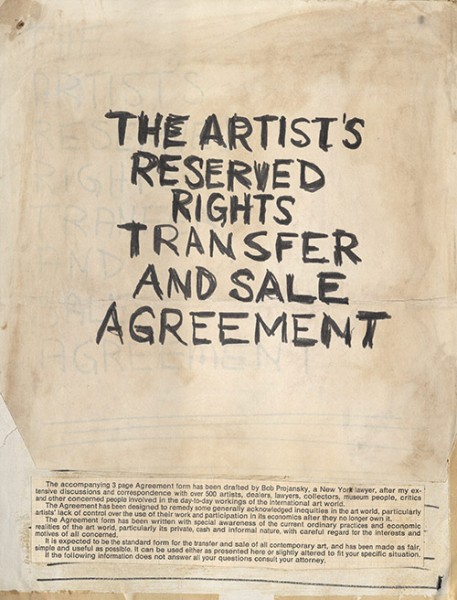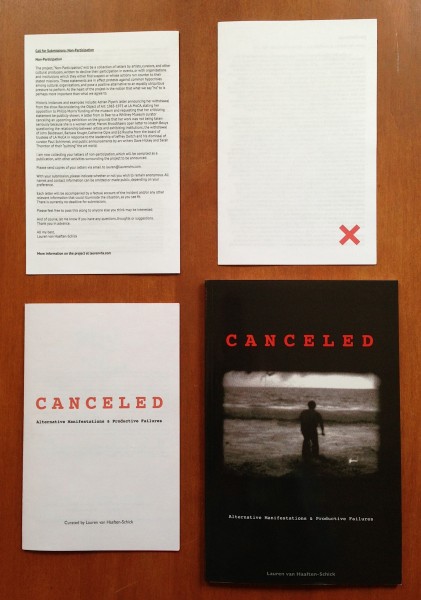I’m very pleased to be heading to Denmark to participate in the upcoming series Making Social Realities with Books at rum46, organized by the space in partnership with Bret Bloom and the Jutland Academy of Art.
The talk takes place on Wednesday, January 22nd at 19:00 at rum 46 in Aarhus. The workshop is the following day at rum 46 starting at 10:00.
Talk: Critical Circulation: Artists’ Books, Labor, and the Law
A dual economic and legal history of contemporary art can be traced through the histories of artists’ publishing practices, and in the attachment of legal terms to works of art. As an alternative exhibition format, publications have been employed as a crucial means of disseminating documentation and information on a wide and accessible scale, potentially in ways that are more historically stable and accessible than a traditional exhibition. Employing legal instruments such as the contract and certificate of authenticity, artists have attempted to gain control over the circulation and exhibition of their work, while critiquing a market-driven cultural economy. Each of these strategies instrumentalize circulation as a site for critique, allowing for the politics surrounding the creation, presentation, exchange, and future provenance of art to become at least as relevant as the work itself.
Conceptual art and institutional critique of the 1960s-70s stand as important historic examples in which the discourses of communications, labor, and the law are utilized to further artists’ rights and develop critical forms of production, dissemination, and reception. Beginning with Seth Siegelaub’s abandonment of a traditional gallery model to realize exhibitions as publications, and his later development of the “Artists’ Reserved Rights Transfer and Sale Agreement,” and concluding with current examples explored in the recent exhibition Canceled: Alternative Manifestations & Productive Failures, we will re-examine how these strategies have been used to create new modes of artistic agency.
Workshop: Non-Participation
Non-Participation is an ongoing collection of letters of refusal written by artists and other cultural producers to decline their participation in cultural events or exhibitions for political or ethical reasons. The issues raised by these artists’ letters include the non-payment of artists’ fees, the denial of copyright ownership, censorship, rejections of corporate funding, and many others. To quote one such letter by artist Michael Rakowitz, “sometimes what we say ‘no’ to is more important than what we agree to.”
Workshop participants will explore issues of how artistic labor is evaluated, consider ways for artists to better assert their needs or negotiate compromise, and compare the situations of artists in different national and cultural contexts. These considerations are particularly pertinent given the increasingly unstable state of arts funding internationally, and as privatization and debt become deeply politicized. We will discuss past and present examples of cultural producers advocating for improved labor conditions, such as the Art Workers Coalition, W.A.G.E., The CarrotWorkers Collective, and others. We will also explore various legal and other practical tools developed by cultural producers for asserting one’s rights and expectations as arts workers, including Helena Keeffe’s Standard Deviation, Mary Beth Edelson’s Artist Contract, and Seth Siegelaub’s The Artist’s Reserved Rights Transfer and Sale Agreement. Participants will formulate scenarios for their own “non-participation,” considering when they can and should say “no.”










